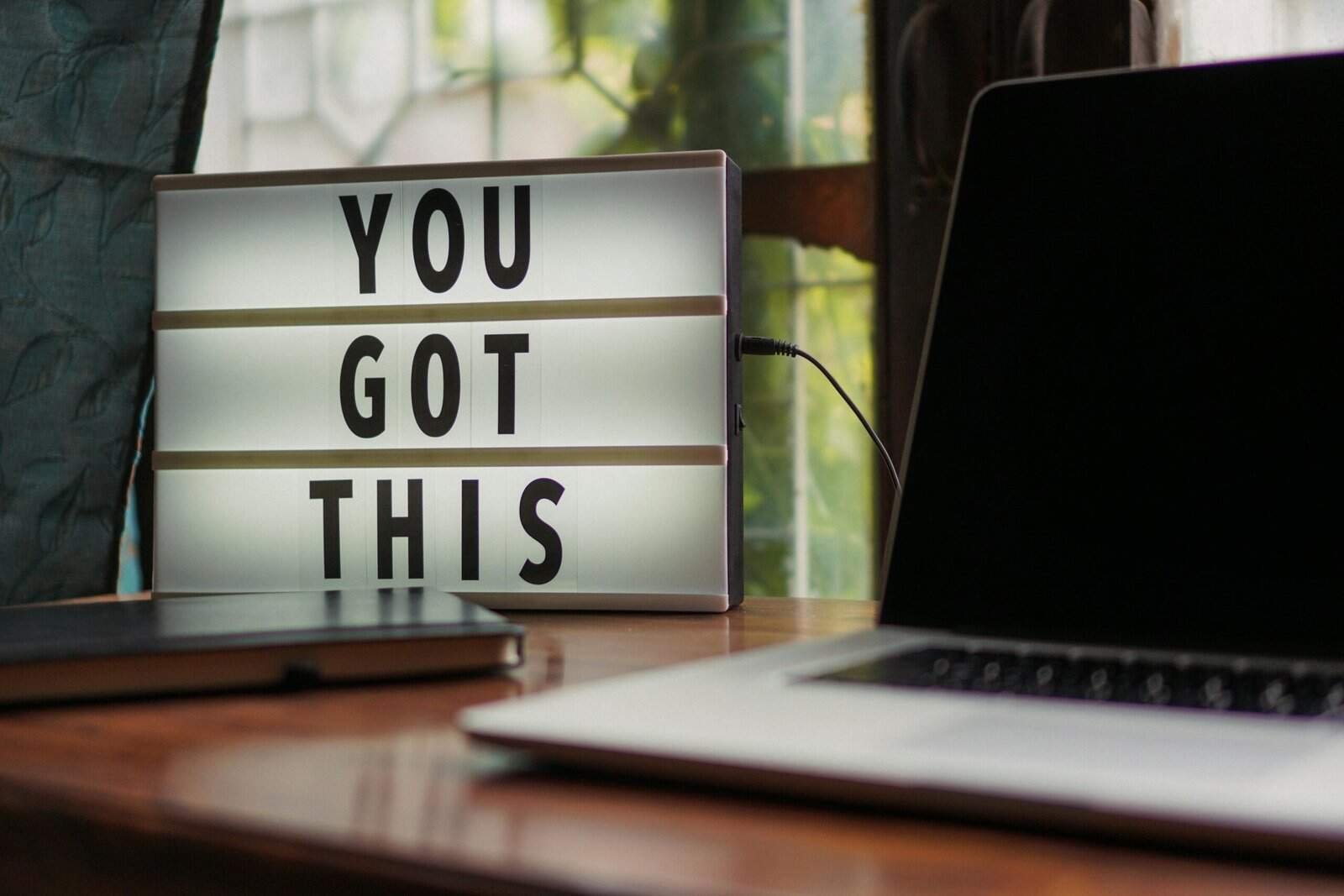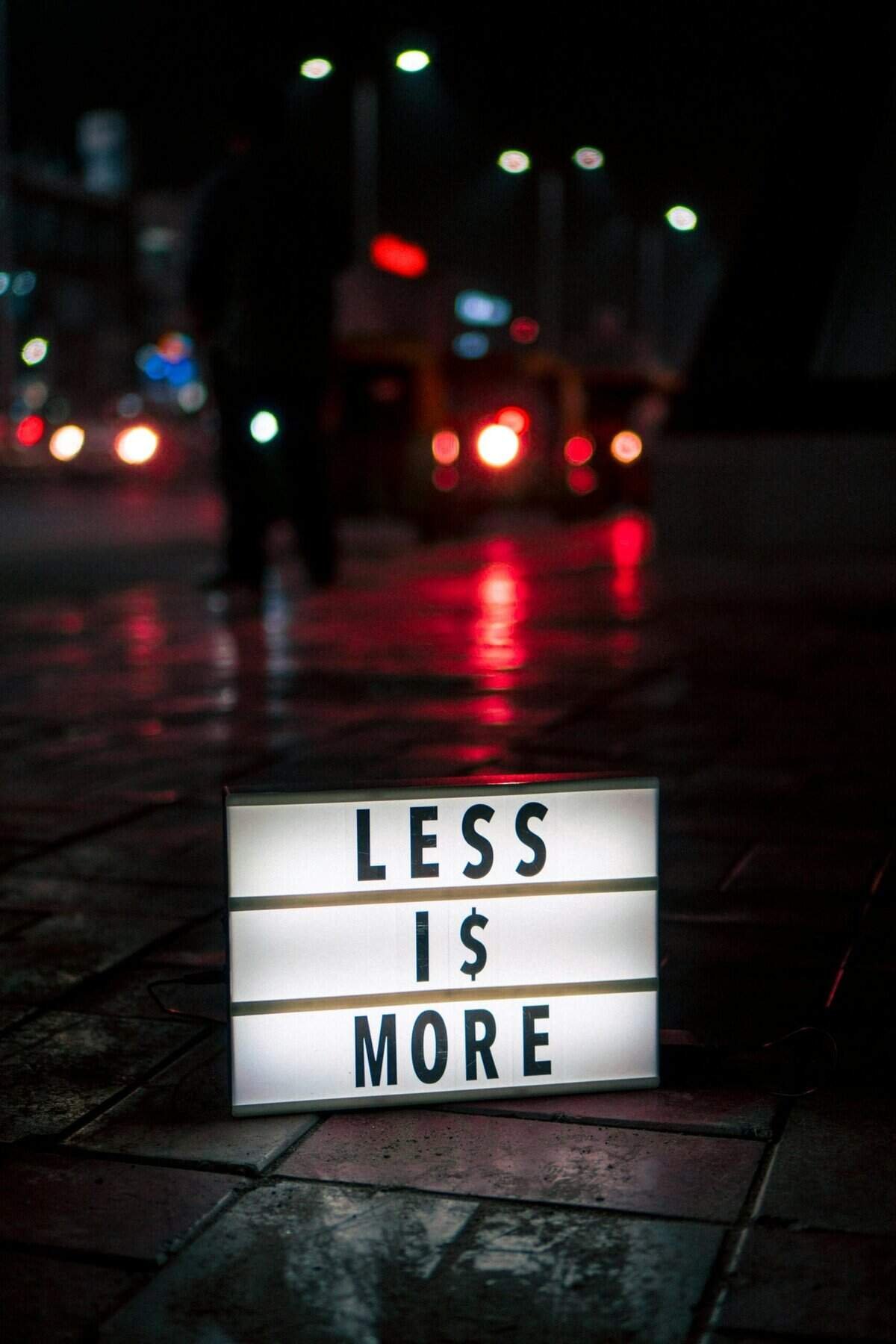Are you wondering how to keep going when freelancing feels lonely and motivation runs low?
How Do I Stay Motivated When Freelancing Gets Tough?
Freelancing can be incredibly freeing, but it can also test your endurance and resolve. You can learn practical strategies and mindset shifts that help you stay motivated, manage loneliness, and maintain steady momentum even when work slows or stress rises.

Why freelancing feels tough
Understanding why you’re struggling is the first step toward fixing it. Freelancing combines the pressures of self-employment, irregular income, client management, and often working alone — all of which can sap motivation.
You may be dealing with overlapping challenges: a thin pipeline, a hard client, or the mental load of running everything yourself. Recognizing the specific stressors you’re facing helps you choose the best tactics to respond.
Loneliness and isolation
Working without coworkers means you miss casual interactions, immediate feedback, and shared energy. That lack of social reinforcement makes it easier to lose momentum and feel disconnected from your purpose.
You can treat loneliness as a solvable problem rather than a permanent state. Building predictable social structures and small regular interactions helps you feel less alone while you work.
Income uncertainty and financial stress
When money fluctuates, anxiety increases and motivation can take a hit. Financial stress makes it harder to focus, plan long-term, or take creative risks.
Practical financial buffers and predictable revenue sources are antidotes to uncertainty. They reduce the pressure that saps motivation and let you focus on the work rather than survival.
Decision fatigue and overwhelm
You make dozens of decisions daily — what project to bid on, what client to reply to, when to invoice, what priorities to set. That constant decision-making wears you down and can make work feel exhausting rather than energizing.
Reducing the number of decisions you need to make each day and systematizing repetitive tasks helps preserve your mental energy for important creative work.
Mindset shifts to keep you going
Changing how you think about setbacks, slow periods, and daily tasks will give you a steadier motivation baseline. Your internal narrative strongly influences how long you can sustain effort.
You don’t have to be upbeat all the time; you can be realistic and compassionate with yourself while staying committed to progress.
Reframe failure and slow periods
Treat slow months as part of the freelancing cycle rather than a personal indictment. You can view them as opportunities to refine systems, learn, or rest strategically.
When a client drops a project or a pitch fails, treat it as information rather than judgement. Ask: what can I learn, what will I change, and what does this free me to do next?
Focus on process over outcome
When you make motivation contingent on results, the uneven nature of freelancing makes staying engaged difficult. Shift your attention to reliable processes you can complete daily or weekly.
Design workflows you can control — marketing activities, project routines, and personal habits. Over time, consistent process work produces results even if progress seems slow in the moment.
Celebrate small wins
Small completions keep your brain rewarded and help sustain effort. Acknowledge finishing a proposal, handling a tricky client conversation, or polishing a portfolio item.
Create visible trackers for small achievements — a checklist, a habit tracker, or a public update. That positive reinforcement fuels motivation more reliably than waiting for big successes.
Practical routines to boost motivation
Routines reduce decision fatigue and create momentum. When you treat your freelancing day as a sequence of predictable blocks, you lower the friction for starting work and staying productive.
Design routines that align with your energy patterns and personal preferences so they feel natural and stick.
Morning routine for momentum
A predictable morning routine sets the tone for the whole day. Include one work-spark activity that gets you into the creative zone before email or admin tasks.
Your morning routine doesn’t need to be long — 20–45 minutes of focused work or simple habits (movement, hydration, a quick review of your plan) can make a big difference.
Work blocks and the Pomodoro method
Work in time blocks to build focus and protect energy. Use 60–90 minute deep work sessions for demanding tasks, and shorter 25–30 minute Pomodoro sprints for admin or learning.
Schedule your deep work at your peak energy times, and protect those blocks from meetings and reactive interruptions.
Weekly planning and review
Spend a short weekly session planning priorities and reflecting on what went well and what didn’t. That practice helps you stay aligned with long-term goals and prevents drifting.
Set aside 30–60 minutes at the same time each week to plan, prioritize next steps, and clear small tasks from your list.
Table: Sample weekly schedule for motivation and structure
| Time block | Activity | Purpose |
|---|---|---|
| Monday morning (60 min) | Weekly planning & priority-setting | Align week with goals |
| Daily morning (20–45 min) | Focus sprint on one creative task | Build momentum before email |
| Midday (60–90 min) | Client or collaborative work | Use social energy window |
| Afternoon (30–45 min) | Admin, invoicing, outreach | Handle predictable tasks |
| End of day (10–15 min) | Daily review and inbox triage | Close loop and prepare next day |
| Weekly reflection (30–60 min) | Wins, challenges, learning | Keep long-term perspective |
Building community and reducing loneliness
You don’t need an office to get social support. Intentional community building gives you accountability, camaraderie, and feedback that keep you motivated.
Even short, regular interactions can dramatically reduce feelings of isolation and help you see your work’s impact.
Online communities and networks
Join forums, Slack groups, Discord servers, and niche communities aligned with your field. Participate regularly and contribute value to strengthen connections.
Use these spaces not only for technical help but also for sharing wins, venting when needed, and celebrating work milestones with peers.
Coworking spaces and local meetups
Working occasionally from a coworking space or attending local meetups gives you that in-person energy boost. The ambient productivity often helps you get more done.
If you can’t access a coworking space, schedule “virtual coworking” sessions with others where you work together on video for an hour and check in at the end.
Accountability partners and masterminds
Pair up with one or two peers who hold similar goals and meet weekly to report progress and set commitments. An accountability partner makes you more likely to complete tasks.
Masterminds give you multiple perspectives on problems and help with momentum during slow patches. Keep groups small and structured for consistent benefit.

Financial strategies to reduce stress
Money worries are a major demotivator. You can take concrete steps to stabilize finances, which will free mental bandwidth and reduce anxiety.
Plan for variability rather than hoping it won’t happen — that preparedness keeps you calmer and more consistent.
Emergency fund and predictable income
Aim for a minimum emergency fund of three months of living expenses; six months is safer if possible. That buffer lets you make better choices when work slows.
Create predictable income with retainer clients, monthly packages, or recurring services to smooth cash flow and reduce stress about where the next project will come from.
Diversify income streams
Relying on one client or one type of work increases vulnerability. Diversifying with micro-products, passive income, training, or multiple client types reduces pressure.
Small ongoing revenue from a course, templates, or subscription services can provide peace of mind and allow you to be selective with projects.
Table: Income diversification ideas with pros and cons
| Idea | Pros | Cons |
|---|---|---|
| Retainer clients | Predictable monthly revenue | Requires ongoing deliverables |
| Courses or workshops | Scalable income, passive potential | Upfront work to build |
| Templates or digital products | Low maintenance after launch | Market saturation risk |
| Affiliate partnerships | Passive earnings | Commission limitations |
| Consulting/agency work | Higher fees per engagement | More client management |
Client management for better motivation
Clients shape your day-to-day experience. Better client selection, clear boundaries, and firm expectations are essential to staying motivated and avoiding burnout.
When you control how you manage client relationships, you control a large portion of your stress levels.
Set boundaries and expectations clearly
Define working hours, response time, scope of work, and revision limits in your proposals and contracts. Clear boundaries reduce scope creep and exhausting last-minute demands.
Consistent policies (late payment fees, minimum project fees) make it easier to enforce those expectations without emotional energy.
Saying no and choosing the right projects
Learn to evaluate projects by fit: profitability, creative interest, timeline, and client temperament. It’s okay to turn down work that will drain you.
Saying no frees space for work that aligns with your skills and values — which makes motivation more sustainable.
Raise rates strategically
Periodic rate increases reflect your skills and help you attract clients who value your work. Charging more can sometimes reduce the number of problematic clients and increase your sense of professional worth.
Implement rate increases with advance notice, and offer existing clients the option to renew at the previous rate for a limited period.

Health and self-care to maintain energy
Motivation relies on physical and mental energy. Taking care of your body and mind isn’t indulgence — it’s essential business practice.
When your basic needs are consistent, you can sustain focus, creativity, and resilience.
Physical health: sleep, movement, and nutrition
Prioritize consistent sleep, daily movement, and basic nutrition. Those three fundamentals regulate mood, creativity, and stamina.
Small consistent habits — a short walk, standing breaks, and adequate hydration — create outsized improvements in how you feel and work.
Mental health: breaks, therapy, and reflection
Regular breaks and mental health practices reduce stress and prevent burnout. If you feel persistently low or anxious, professional support such as therapy is a good investment.
Try short mindfulness practices or journaling to clear mental clutter and gain perspective on recurring stressors.
Micro-rests and dopamine-friendly habits
Use micro-rests between tasks to refresh focus — a 5-minute stretch, a quick tidy, or a short breathwork exercise can reset your energy. Balance low-effort rewards (a short walk, a favorite song) to maintain motivation without derailing productivity.
Avoid constant rewards that fragment attention; structure them as incentives for completing meaningful blocks.
Skill growth to keep you interested
When work becomes routine, skill development reintroduces novelty and challenge. Learning keeps your craft engaging and helps you command higher rates over time.
Pick learning goals that are directly applicable to your projects to get immediate motivation payoffs.
Learning plans and micro-courses
Create a 6–12 month learning plan with small, regular commitments: 30–60 minutes a few times a week. Micro-courses or sprint learning problems deliver progress that feels achievable.
Track milestones like a new skill demonstrated in your portfolio or a client outcome that used a new approach.
Side projects and passion work
Side projects let you try new styles, markets, or formats without client pressure. They keep your creative curiosity alive and can become future income streams.
Treat side projects like experiments: set limited scope, short timelines, and clear learning goals to avoid them becoming additional stress.
Tracking progress and updating your portfolio
Document new skills and add case studies to your portfolio regularly. Seeing tangible progress motivates you and strengthens your credibility with clients.
A portfolio refresh session every quarter or after a big project helps you capture momentum and market yourself confidently.

Productivity tools and systems
The right tools can remove friction and keep you focused. But tools only help if they align with your workflows and you’re disciplined in using them.
Choose a small set of reliable tools for communication, task management, and finance, and standardize how you use them.
Table: Recommended tools by purpose
| Purpose | Example tools | Why it helps |
|---|---|---|
| Project management | Trello, Asana, Notion | Centralizes tasks and timelines |
| Time tracking | Toggl, Harvest | Helps with billing and understanding time |
| Invoicing/payments | QuickBooks, Stripe, PayPal | Speeds payments and tracks income |
| Communication | Slack, Email, Zoom | Keeps client conversations organized |
| File sharing | Google Drive, Dropbox | Keeps assets accessible and backed up |
Automations and templates
Create templates for proposals, onboarding emails, contracts, and invoices to save time and reduce stress. Small automations (email sequences, invoicing reminders) stop repetitive tasks from eating motivation.
You can automate follow-ups and reminders so you don’t need to rely on memory for administrative tasks.
Limiting distractions and setting boundaries
Use app blockers, notification filters, and a dedicated workspace to reduce interruptions. Set explicit “do not disturb” times during your deep work blocks.
Communicate availability to clients and family so interruptions are minimized while you’re in focus mode.
When burnout needs a break
Sometimes motivation isn’t a lack of techniques — it’s burnout. If you’re flat, exhausted, or increasingly resentful, the right response might be a genuine break.
A planned break prevents a forced one, allowing you to recharge before you make mistakes or lose clients.
Signs that you need time off
Persistent fatigue, cynicism about work, increasing errors, and irritability are common signs of burnout. If your enjoyment is gone and you’re functioning on autopilot, consider stepping back.
Early rest prevents longer recovery periods. Recognize the signs and act before the situation worsens.
How to take a rest without losing clients
Plan for a short sabbatical: notify clients in advance, complete or hand off active work, and set an out-of-office with a fallback contact. Offer limited availability rather than disappearing when possible.
Use your absence as an opportunity to evaluate which processes are dependent on you and improve them so future breaks are easier.
Returning from a break: soft re-entry plan
Ease back in with a two-day buffer: review projects, check urgent messages, and complete one high-impact task before resuming full load. Resist the urge to overcommit on day one.
A soft re-entry preserves the benefits of the break and prevents immediate relapse into stress.

Creating a motivation action plan
Turn strategies into a plan you can follow. A written action plan helps you implement changes and measure progress objectively.
Choose a few high-impact changes and schedule them into your calendar so they happen.
30-day action plan (what to do now)
- Week 1: Build a 3-month emergency budget and set one retained client outreach goal.
- Week 2: Establish a daily morning routine and two deep work slots.
- Week 3: Join one online community and schedule a virtual coworking session.
- Week 4: Create two templates (proposal and onboarding) and set an automatic invoicing reminder.
These concrete weekly steps build immediate structure and reduce friction for ongoing motivation.
90-day action plan (what to build)
- Secure at least one retainer client or subscription income.
- Finish a micro-course that improves your primary offering.
- Create a simple portfolio piece or case study.
- Run an outreach campaign to ideal clients and record responses for refinement.
A 90-day horizon gives you time to see the impact of process changes and adjust without pressure.
Table: Example 90-day milestones and metrics
| Milestone | Metric | Why it matters |
|---|---|---|
| Retainer secured | 1 new retainer client | Stabilizes income |
| Portfolio update | 3 new case studies | Increases credibility |
| Automation setup | 3 templates/automations | Frees mental energy |
| Community engagement | Weekly interactions | Reduces loneliness |
Troubleshooting common motivation blocks
When you feel stuck, a systematic troubleshooting approach gets you back on track without guesswork.
Break problems into clear causes and testable actions so you can iterate quickly.
Imposter syndrome
If you question your abilities, list evidence of your past successes and feedback. Offer a small pilot project at a lower risk to rebuild confidence.
Set small experiments that produce visible outcomes to counter negative self-talk and re-establish competence.
Decision paralysis
If choices overwhelm you, limit options and set a timebound rule. For example, pick between three vetted clients or use a decision matrix that rates fit and profitability.
Automate recurring decisions with standard policies to keep your mental energy for new challenges.
Lack of structure
If days blur together, implement time blocking and a short daily review. Start with two fixed rituals: a morning focus sprint and an end-of-day wrap-up.
These two routines create enough scaffolding to maintain momentum while you layer in other changes.
Realistic examples and scripts you can use
Scripts remove friction when you need to have difficult conversations or take decisive action. Use plain language that communicates boundaries and professionalism.
Keep templates short, polite, and consistent with your brand.
Asking for help or feedback
“Hi [Name], I’m working on [project/topic] and would really value a quick 20-minute look from someone who understands [skill]. Would you have time this week to give feedback? I can share a summary beforehand to make it efficient.”
This script sets expectations and makes it easy for people to say yes.
Saying no to a project
“Thank you for thinking of me, [Name]. After reviewing the project, I don’t think it’s the best fit for my current focus. I can recommend [alternative] or refer you to someone who may be a better match.”
Clear, professional refusals preserve relationships and your energy.
Raising rates with existing clients
“I wanted to let you know that starting on [date] my rates will be adjusted to [new rate]. I value our partnership and wanted to offer you the chance to renew your current arrangement at the existing rate if we sign before [date].”
This communicates value and gives clients a respectful transition period.
Small daily habits that compound motivation
Consistency beats intensity. Small daily habits that require low effort but recur reliably build resilience and momentum over time.
Choose one tiny habit you can do daily and track it — the cumulative effect will surprise you.
- Write one paragraph toward a side project.
- Send one thoughtful message to a peer or potential client.
- Spend 15 minutes learning something new in your niche.
- Close your day with a single line noting what went well.
These small daily wins add up to sustained progress and a stronger sense of control.
Final encouragement and next steps
When freelancing feels tough, you have many levers to pull — mindset shifts, routines, community, finances, client management, and self-care. You don’t need to change everything at once; pick a few high-impact moves and give them time to work.
Start by choosing one immediate action from the 30-day plan and schedule it into your calendar now. Consistent small steps will rebuild motivation, reduce loneliness, and get you back to enjoying the freedom and ownership that freelancing offers.
